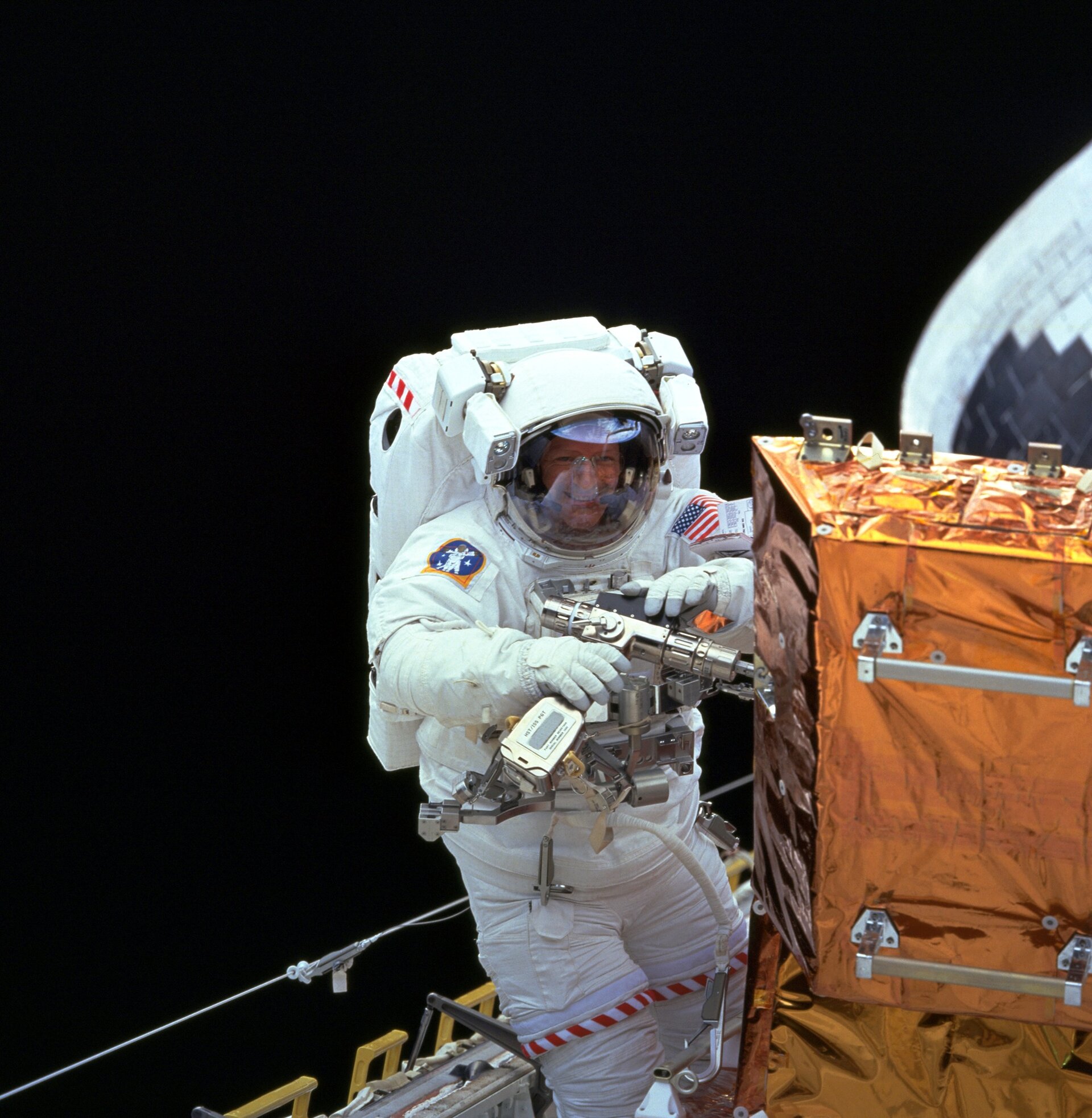Claude Nicollier
European Space Agency (ESA) astronaut
Personal data
Claude Nicollier was an ESA astronaut of Swiss nationality for almost 30 years.
Education
He graduated from the University of Lausanne in 1970 with a Bachelor of Science in physics and the University of Geneva in 1975 with a Master of Science in astrophysics. He also qualified as a Swiss Air Force pilot in 1966, as an airline pilot in 1974 (flying DC-9s for Swissair from 1974 to 1976), and became a test pilot in 1988 at the Empire Test Pilots’ School, Boscombe Down, UK.
Special honours
He is a recipient of Honorary Doctorates from the Ecole Polytechnique Fédérale de Lausanne, and the Universities of Geneva and Basel.
Experience
Claude was a member of the first group of ESA astronauts selected in 1978. He joined Group 9 of NASA astronauts in 1980 for Space Shuttle training at the Johnson Space Center, Houston, Texas, where he was stationed until September 2005. His technical assignments in Houston included Space Shuttle flight software verification in the Shuttle Avionics Integration Laboratory, development of Tethered Satellite System retrieval techniques, and Remote Manipulator System and International Space Station robotics support.
From 1996 to 1998, he was Head of the Astronaut Office Robotics Branch. From 2000 on, he was a member of the Astronaut Office Extravehicular Activity Branch, while maintaining a position as Lead ESA astronaut in Houston.
During his assignment in Houston, he also maintained an active duty status within the Swiss Air Force with a rank as Captain, flying Hawker Hunter, Northrop F-5E Tiger and Pilatus PC-9 aircraft until the end of 2004. He has logged more than 6400 flight hours, 4000 of which are in jet aircraft. He still flies Hawker Hunters, as civilian aircraft, during airshows.
Spaceflight experience
Claude was a crewmember on four Space Shuttle flights: STS-46 in 1992 (Eureca deployment and first test of a Tethered Satellite System), STS-61 in 1993 (first servicing mission of the Hubble Space Telescope), STS-75 in 1996 (second flight of Tethered Satellite System, and microgravity investigations), and STS-103 in 1999 (third Hubble servicing mission ). He logged more than 1000 hours in space, including a spacewalk lasting more than eight hours to install new equipment on Hubble during STS-103.
Current assignment
Claude retired from ESA in 2007, and is currently professor at the Swiss Federal Institute of Technology in Lausanne (Ecole Polytechnique Fédérale de Lausanne), where he teaches a course on Space Mission Design and Operations, and provides assistance to students on space-related projects. He is also involved in the Solar Impulse solar-powered aircraft as Head of Flight Test and Head of the Safety Review Board. This project aims to fly around the world in several steps on solar power only, with one pilot. The design and construction of the final aircraft started in 2011.















 Germany
Germany
 Austria
Austria
 Belgium
Belgium
 Denmark
Denmark
 Spain
Spain
 Estonia
Estonia
 Finland
Finland
 France
France
 Greece
Greece
 Hungary
Hungary
 Ireland
Ireland
 Italy
Italy
 Luxembourg
Luxembourg
 Norway
Norway
 The Netherlands
The Netherlands
 Poland
Poland
 Portugal
Portugal
 Czechia
Czechia
 Romania
Romania
 United Kingdom
United Kingdom
 Slovenia
Slovenia
 Sweden
Sweden
 Switzerland
Switzerland



























